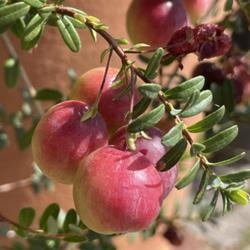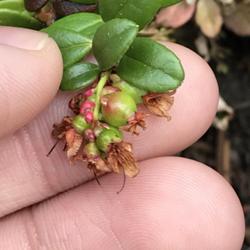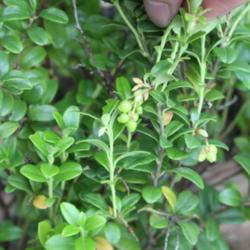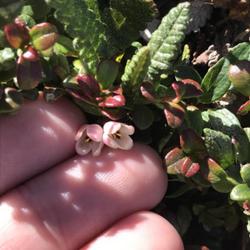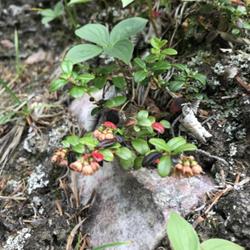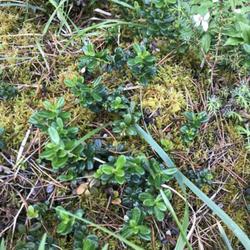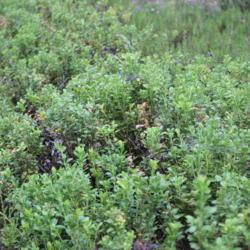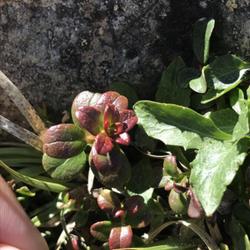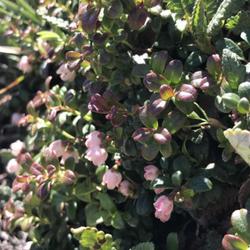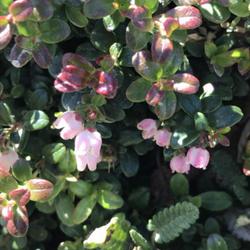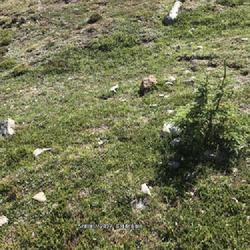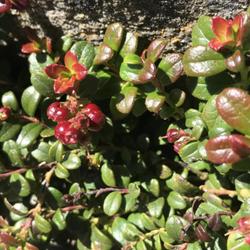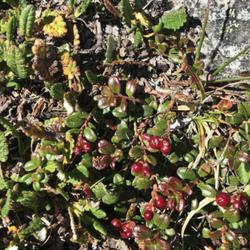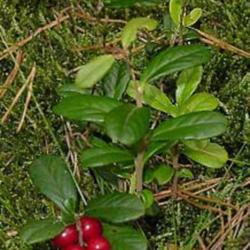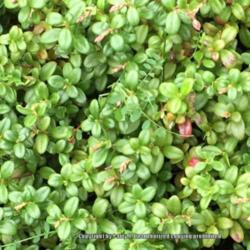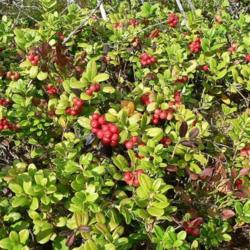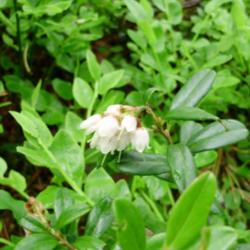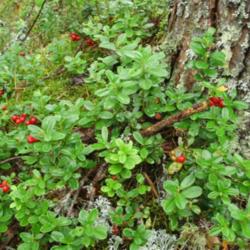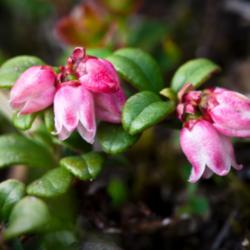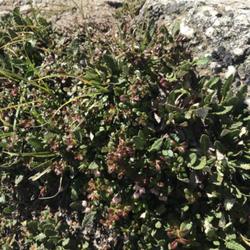A short creeping shrub with rounded, evergreen leaves. The leaves are gorgeous and shiny: yellow-green, sometimes with a pink tinge, when actively growing; dark green when mature; often purplish in the winter. The flowers are thickly clustered, light pink emerging from darker pink buds. Very winter-hardy, but may be hard to grow in areas with very hot summers or mild winters. Spreads by layering and underground rhizomes. Will not tolerate alkaline soil, prefers acidic, but may grow just fine in neutral soil with lots of organic matter and some sand, and regular fertilization.
Grows well with
Lowbush Blueberry (Vaccinium angustifolium) , which is about the same height, and likes the same kind of soil.
The European subspecies is more commonly cultivated than the North American one, and is about twice as tall, up to 16 inches high. I have both of them growing close together in my yard. I'm far more fond of the North American subspecies; it's just so tiny and cute. I got it by chance from a friend. But there are many cultivars of the European subspecies, with large fruit and other desirable characteristics.
In the wild, lingonberries often grow in sphagnum moss, which constantly grows upwards and covers the stems, allowing them to grow roots and eventually send up new stems of their own. In order to encourage this natural layering, push down and bury longer stems, or stems that are already growing diagonally (indicating their desire to be layered), in an inch or two of soil. Also, dig up the whole clump every year and plant it an inch or two deeper, or simply add a few inches of mulch every year. Just don't harm the shallow root ball of dense, small roots. By layering, I have created pretty dense clumps.
The underground rhizomes also send up stems a few inches from the parent plant. But simply relying on rhizomes will not create dense clumps.
I've grown lingonberries for many years in loam or sandy loam with a little fine pine-bark mixed in, but finally created a deeper bed of mostly pine bark, which they will be happier in. My soil is slightly alkaline, but they didn't mind it too much. They appreciate a high-nitrogen fertilizer (since they grow many new stems every year), along with some iron sulfate and magnesium sulfate. I mixed the last two into the new bed. I'm also growing lowbush and half-high blueberries and
Wintergreen (Gaultheria procumbens) in the same bed.
